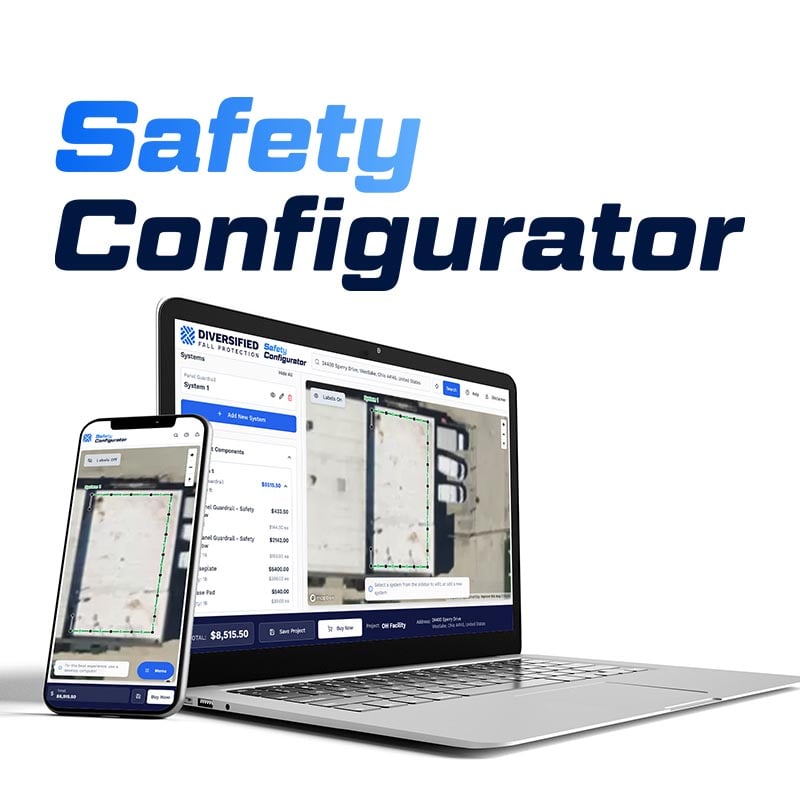
Effective Incident Reporting Techniques | Diversified Fall Protection
Falls at a workplace, though undesirable, provide an opportunity to learn, improve, and prevent future occurrences. The key lies in incident reporting and maintaining proper documentation. This article will explore best practices for these critical processes and offer practical tools to help professionals build a safer work environment.
The Real Value Behind Reporting
At first glance, incident reporting might seem like a bureaucratic necessity, an obligatory box to tick post-incident. But, at its core, it's a tool for continuous improvement. Consider a scenario where an employee trips over a wire on the shop floor. A simple report can identify the hazard.
Over time, with similar incident reports, a pattern emerges showing that many have tripped over various obstacles. These insights lead to implementing a clear pathway policy, eliminating such risks. Every incident report is a snapshot of a moment, but together, they weave a broader narrative.
Consistent documentation offers a chance to:
Spot Trends: Multiple reports of slips and falls in a particular section can hint at structural issues or the need for better signage.
Refine Training: If a type of incident recurs, maybe employees need better training on certain equipment or processes.
Revisit and Update Policies: Regularly review incident reports to ensure workplace policies remain effective and up-to-date.
Incident reporting, when done right, isn't just a reactive process; it's a proactive tool to sculpt a safer, more efficient workspace. By understanding and harnessing its potential, safety professionals can significantly reduce workplace hazards and pave the way for a safety-first culture.
What to Include in Your Reports
A well-structured incident report is more than a formal document; it's a crucial piece in the puzzle of workplace safety. Here is an example of what it should include:
- Date and Time of Incident: (e.g., June 23, 2023, at 10:45 AM)
- The exact timing can reveal factors like shift changes or peak operation hours.
- Location: (e.g., Warehouse Section B near Conveyor Belt 5)
- Precise location helps identify area-specific risks and hazards.
- Description of Incident: (e.g., Employee slipped on a wet surface while carrying a load)
- Detail the sequence of events and involved factors for a clear understanding.
- Immediate Actions Taken: (e.g., Administered first aid and cordoned off the wet area)
- This showcases the responsiveness and may guide future immediate actions.
- Witness Statements: (e.g., A co-worker stated, "The spill was there since morning.")
- This can provide additional insights and might reveal oversight or recurring issues.
- Photos/Drawings (if available):
- Images or sketches can provide a visual context, making the situation easier to grasp.
- Root Cause Analysis: (e.g., Inadequate cleaning schedule led to an unattended spill)
- Uncovering the underlying reason helps in targeting the real problem rather than the symptoms.
- Recommendations for Prevention: (e.g., Implement routine floor inspections and immediate spill response protocol)
- These are forward-looking solutions aiming to prevent future occurrences.
Best Practices for Incident Reporting
The effectiveness of incident reporting doesn't just rely on a one-time response. It encompasses an ongoing process that involves immediate action, in-depth documentation, regular reviews, and learning from events. Let's explore these best practices and how they can cultivate a robust safety culture in your facility.
Timeliness
John, a vigilant safety officer, observed a loose anchor in the facility. Had he delayed reporting this seemingly insignificant issue, it could have escalated into a major accident. The immediacy of John's action demonstrates how reporting incidents right away ensures accurate information collection and allows for immediate corrective measures.
Thorough Documentation
Maintaining these comprehensive records not only helps in understanding the incident but serves as a critical resource for future reference, litigation, and training.
Drawings and Diagrams: Visual representation can be a powerful tool to explain complex scenarios. If a worker slipped near a machine, a location sketch might reveal surrounding hazards.
Photos: Snapshots can capture the scene, providing evidence and context. Imagine having a photo of the uneven floor that caused a trip—it speaks volumes more than a written description.
Interviews with Witnesses: These can add depth and perspective. If a colleague saw the incident, their insight might uncover hidden contributing factors.
Regular Reviews
The practice of regularly reviewing incident reports isn’t just about staying compliant; it's a proactive strategy for continuous improvement. Weekly or monthly reviews can help identify recurring issues, facilitating preventive actions. For example, if reviews find multiple incidents related to ladder usage, it might signal the need for better training or new equipment.
We've put together a free incident report for your use
Don't want to bother putting together your own report? We've created one that has all the relevant information needed after an accident takes place to take action and ensure it doesn't happen again.
Diversified Fall Protection Can Help
Incident reporting is a pivotal part of workplace safety, transcending mere compliance to create a culture of vigilance. It involves key practices such as timely reporting, detailed documentation, regular reviews, and learning from every incident.
Diversified Fall Protection is your partner in this vital journey. Our specialized services, ranging from enhancing fall protection systems to targeted training, are designed to meet your specific needs. Let's work together to turn safety from mere compliance into a sincere promise. Reach out to our experts and step into a future where every workplace is a model of safety and care.
Schedule an assessment with Diversified Fall Protection
Contact Us to request a fall safety review

b-1.jpg?width=1368&height=1340&name=Rail%20(175)b-1.jpg)

